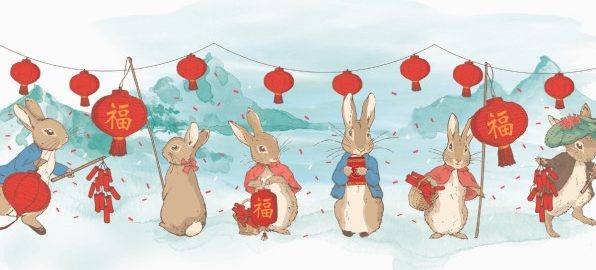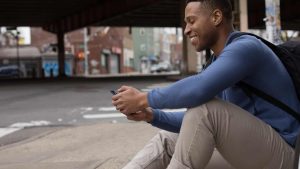The Lunar New Year, which dawns on January 22, is the biggest bash in Asia. But no country is more spirited than the birthplace of the holiday, China, where millions will enjoy a two-week break to ring in the Year of the Rabbit. And money will flow like waterfalls—like flush revenue streams for a horde of big brands seeking to cash in, with a variety of goods ranging from Prada bags to plush toys to pots and pans.
According to lore, the Lunar New Year stems from China’s Shang Dynasty some 3,500 years ago. Back then, it was a ritual of sacrifice to honor ancient gods and ask for a fruitful spring harvest. But in recent decades, the celebrations have become more like a festival of indulgence—bowing in worship of one god: shopping.
It’s a shift 40 years in coming. Since the 1980s, when China’s economy rose from the ashes of the Cultural Revolution and began a relentless march toward the pedestal of a global powerhouse, China’s industry has flourished. And consumer wallets have fattened with new millions to spend. According to McKinsey, the country is expected to contribute two-thirds of global growth in luxury purchases by 2025. Meanwhile, the Lunar New Year has become a chance for businesses across the world to court the Chinese market—much like how Christmas and Thanksgiving became shopping extravaganzas in the Western hemisphere.
Naturally, consumerism boomed. In 2020, the number of luxury products trotted out for the Lunar New Year increased by 76%. During the 2021 holiday week, Chinese shoppers spent a total of 821 billion yuan ($127 billion), and in pre-pandemic 2019, over a trillion yuan ($149 billion).
A wealth of possibilities
It’s perhaps unsurprising. Lunar New Year iconography always seemed ripe for commodification. It follows the 12-year cycle of the Chinese zodiac, with each trip around the sun being shepherded by a different noble beast: This year, it’s the plucky rabbit. Of course, there are endless artistic prospects for zodiac creatures—they can be cutesy (monkeys!), fierce, (tigers!), or majestic (dragons!). But beyond that, the holiday is also brimming with ceremonial symbolism (lanterns! peach blossoms! red hongbao!), which can translate into an array of totems and trinkets, all steeped in promises of luck and prosperity.
Today, the offerings range from pricy and dazzling to humble and budget. In past years, a shopper could beckon good fortune with a $26,000 pig-faced Chopard wristwatch, a $7,000 rooster-carved Montblanc fountain pen, a $32 gold-leaf-painted Aveda hairbrush, or a 60-cent postage stamp featuring animal art from the U.S. Postal Service.
The commercialization is indiscriminate. Even the lowliest zodiac creatures (ahem, the rats of 2020) were draped in royal red and paraded out to the public on Burberry scarves and Fabergé eggs, which consumers then clamored to buy for hundreds to thousands of dollars apiece. Disney seized the opportunity to coin the Year of the (Mickey) Mouse, while Longchamp peddled a different motif: cheese.
Yet, the lengths to which some brands go to stretch their Lunar New Year themes can be troubling. There are worries that the holiday is now just another way for Western businesses to profit off of Eastern traditions. In Cultured magazine’s recent survey of the Asian American community, some argued that lazy or bastardized branding could feel like a money grab. Does Disney’s Mickey Mouse, or a cartoon cheese wedge, really have anything to do with Asian culture? Or what about Stray Rats—a Miami-based streetwear shop that Marc Jacobs tapped for a Lunar New Year campaign, which featured American singer Frank Ocean? At what point are brands whitewashing the meaning of the event in order to sell more (red) T-shirts? As the Lunar New Year grows in prominence, it’s sure to face existential threats.
The full moon rises
For China, this year is special: It will be the first holiday since the pandemic in which citizens can gather in earnest, after December’s abrupt end to the country’s zero-tolerance COVID-19 policy. The Ministry of Transport estimates that 2.1 billion passengers will travel domestically between January 7 and February 15, with many emptying out of cities to visit family in rural villages. It’s expected to inject much-needed life into China’s economy, which struggled last year amid draconian lockdown rules.
Yet despite the pomp, a shadow looms over this ceremony. In January, news broke that China’s population fell in 2022, with deaths outnumbering births for the first time since the 1960s. The reversal in what’s long been the world’s most populous country is stoking fears of a rising demographic crisis, in which China might not have enough youth to power its mighty ambitions—which include eclipsing the United States in global leadership, according to Chinese premier Xi Jinping.
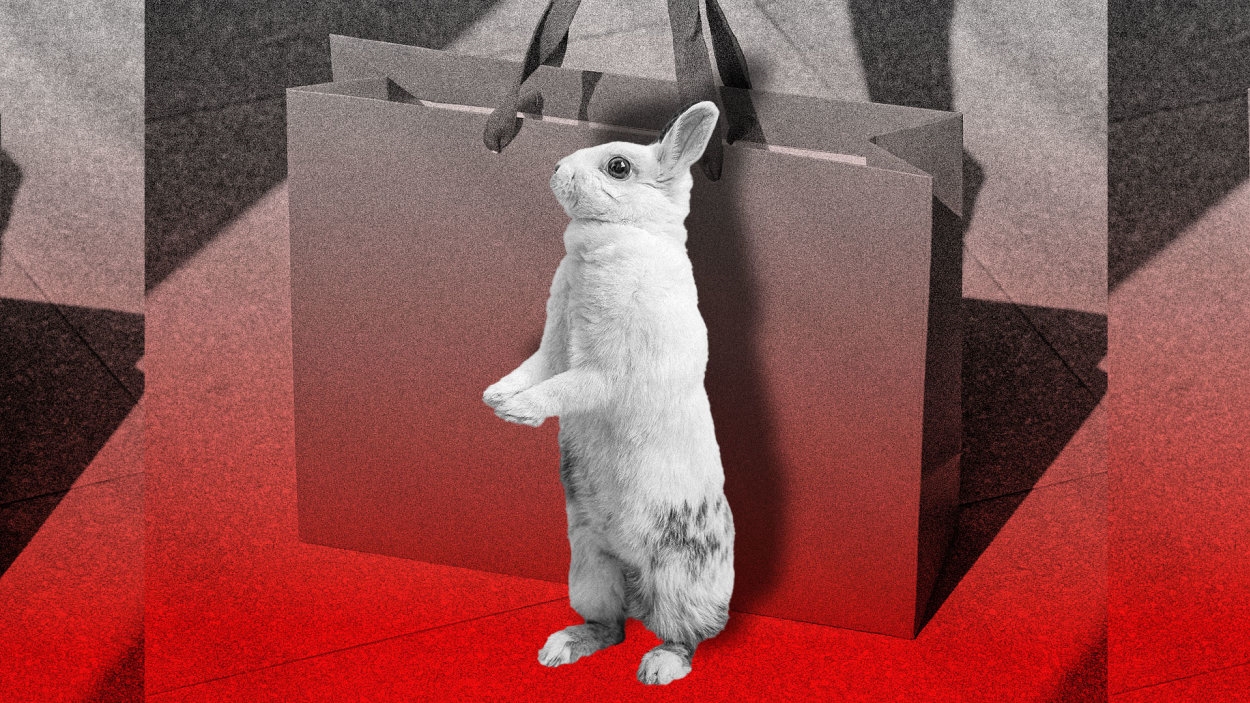
But for two weeks of Lunar New Year, China might as well be on top of the world. Here’s a look at the many brands vying for a share of the Eastern market:
Couture (Gucci, Moschino, Givenchy)
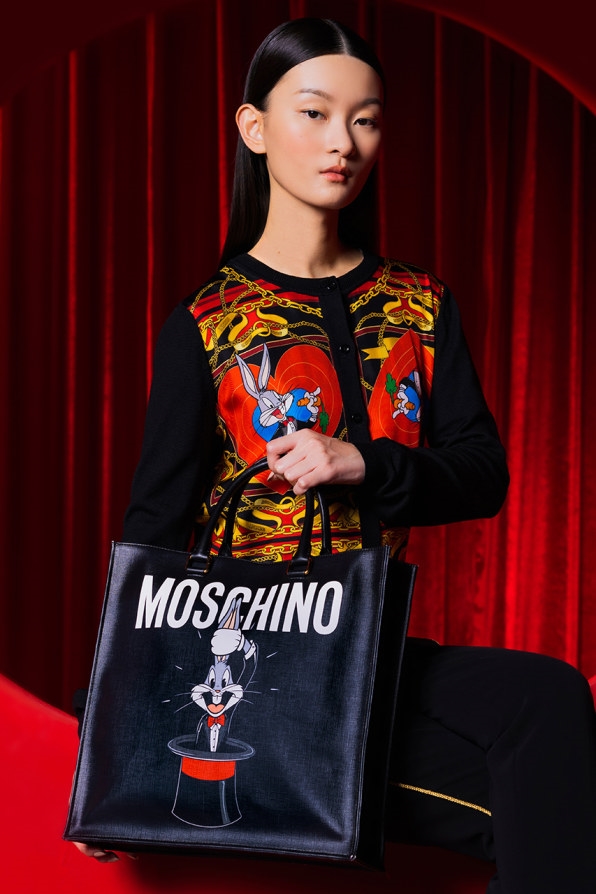
Nearly every haute couture label, from Gucci to Givenchy, designed its own holiday collection. Moschino’s spotlighted the famous Looney Tunes hero Bugs Bunny, while Givenchy’s paid homage to 1920s Disney’s Oswald the Lucky Rabbit.
Bags (Tory Burch, Kate Spade, Radley)
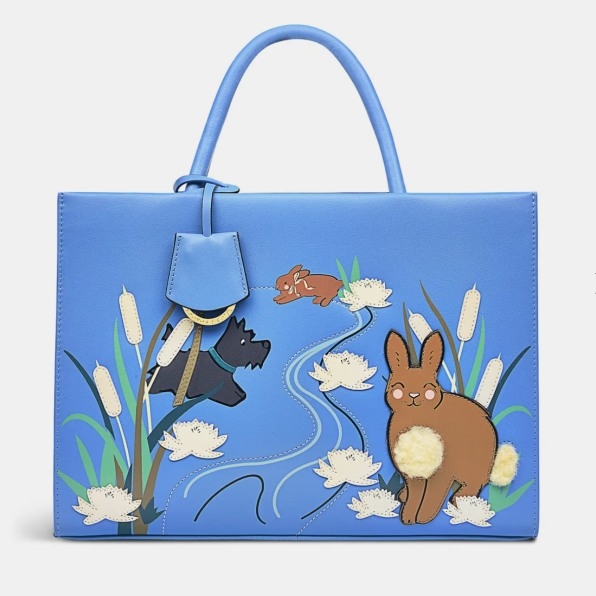
Pursemakers capitalized on the bunny motif.
Sneakers (Nike, Vans)
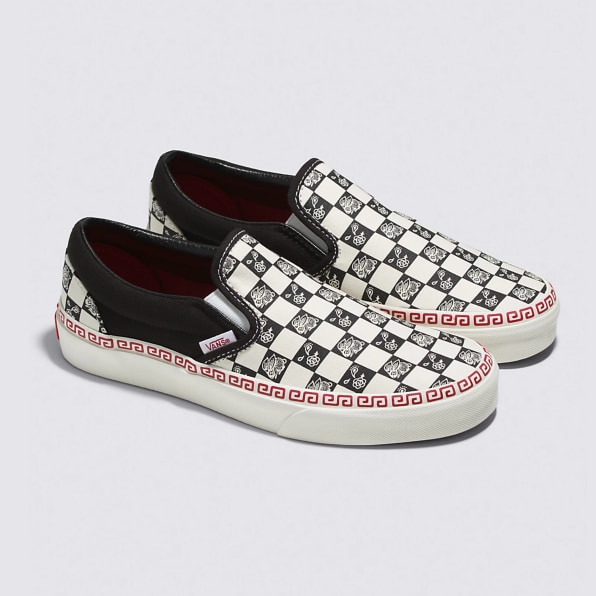
Nike nodded to sneakerhead culture—which has always leaned into the special-edition drop—by colliding hypebeast-style with Chinese characters and hotpot-inspired colors. Meanwhile, Vans opted for the bunny motif.
Tech (Apple, Bang & Olufsen)
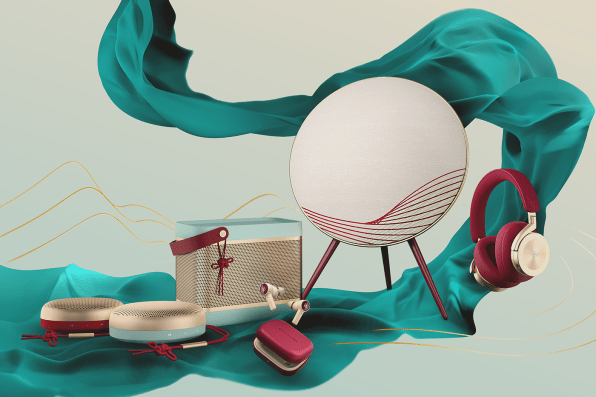
Apple sketched a bunny face into its iconic logo, and on pair of limited-edition Lunar New Year Airpods. For their part, Bang & Olufsen debuted a line of bluetooth speakers in rich red and jade green, featuring wooden accents and Chinese tassels.
Toys (Lego, Hasbro)
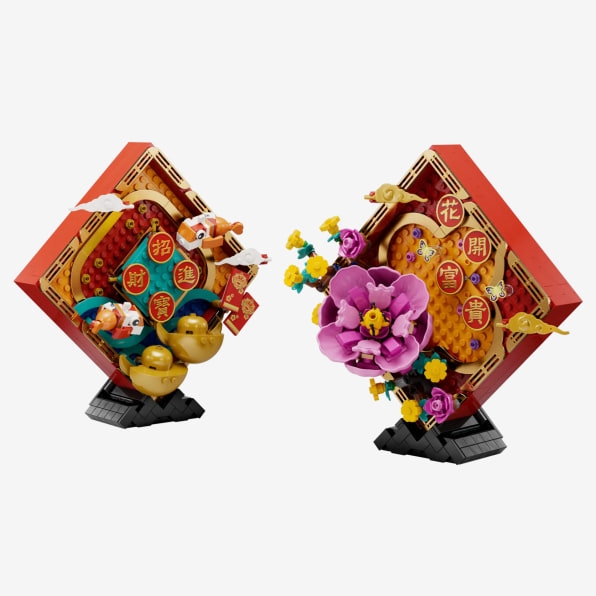
Lego’s holiday sets include pandas, lanterns, orange trees, and an oversize rabbit clutching a hongbao. Hasbro is selling Lunar New Year-themed Monopoly, featuring “Flower Markets” and “Firecracker Shops” on the board and “Pinwheels” in place of chance cards. (In past years, the company sold a qipao-clad My Little Pony and a series of zodiac-themed Optimus Prime Transformers.)
Home decor (Sur La Table, Swarovski)
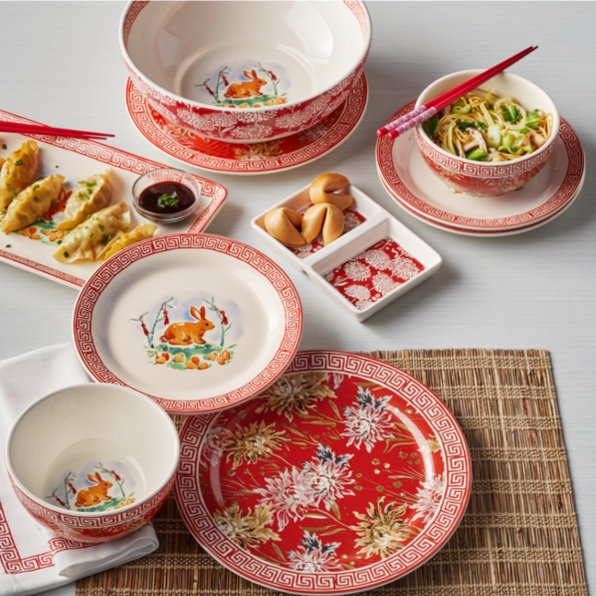
Sur La Table has a line of dishware with watercolor rabbits, and Swarovski has a $500 crystal rabbit figurine.
Cosmetics (Estée Lauder, MAC, SK-II)
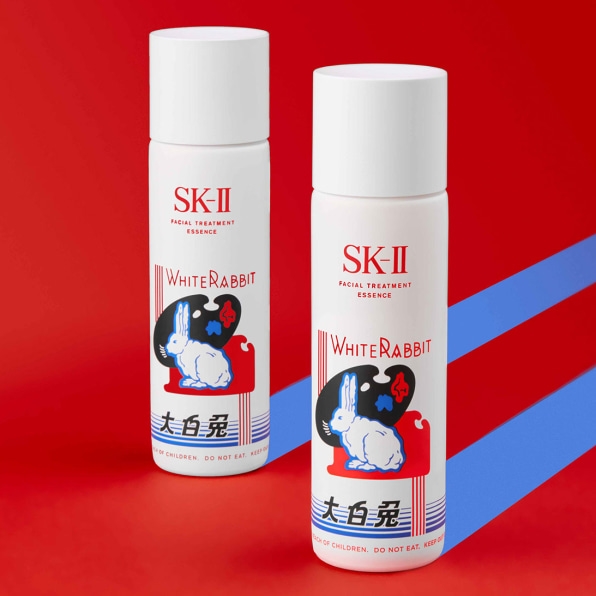
Beauty giant Estée Lauder released a bejeweled rabbit face powder compact, while MAC baked intricate Chinese knot patterns into cakes of blush. Japanese cosmetics brand SK-II dressed up the packaging for its cult-favorite skincare essence with an homage to the classic White Rabbit Chinese candy.
Books (Penguin Random House)
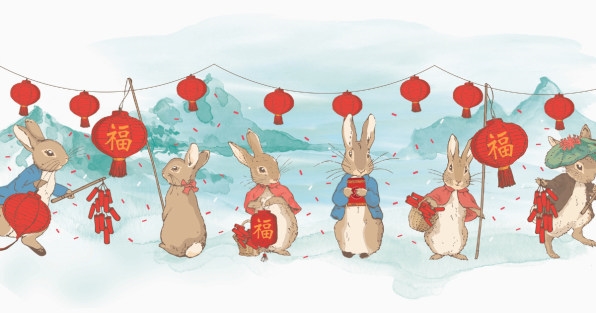
Via WeChat and Weibo, Penguin Random House unveiled a Lunar New Year collaboration with Beatrix Potter’s beloved Peter Rabbit, which depicts Peter and his cotton-tailed siblings stringing up Chinese lanterns.
Fast food (McDonald’s, Starbucks, Panda Express)
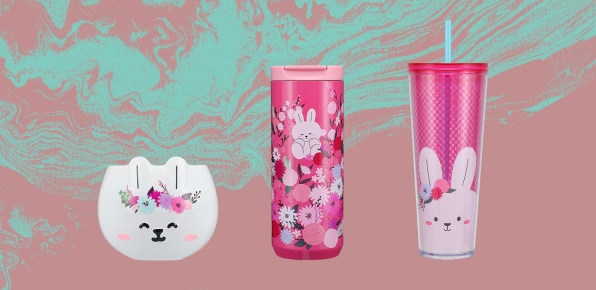
McDonald’s launched a futuristic advertising spot, including scenes rendered by artificial intelligence, which features a QR code that can be scanned to project a 3-D golden rabbit. (It’s also hosting several metaverse events.) Starbucks rolled out bunny-printed mugs and tumblers—along with a heartfelt letter to China partners, signed by the company’s chief executive. Meanwhile, Panda Express is hosting a Lunar New Year scratch-off lottery (in past years, it served up “firecracker” shrimp).
Video games (Overwatch, League of Legends, Pokemon Go)
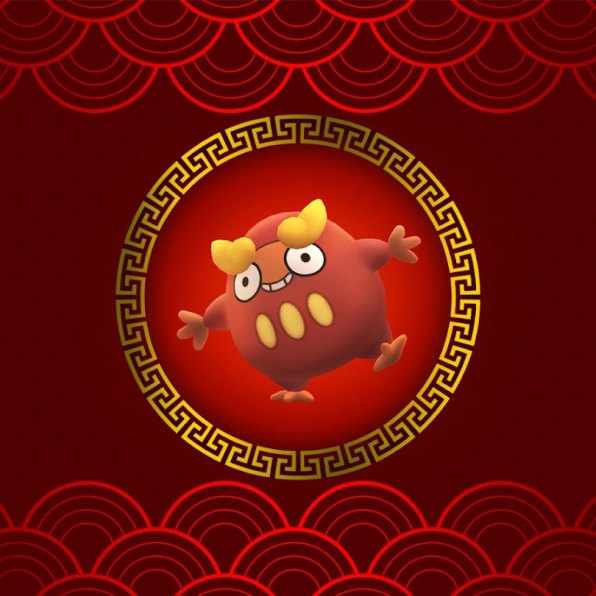
Massively popular video games like Overwatch and League of Legends are creating custom Lunar New Year skins for characters, including a “lion roars victory pose,” a “masked dancer,” and a rabbit costume. Meanwhile, Pokemon Go is amping up the frequency of Pokemon like “Buneary” and “Bunnelby” appearing in the wild.
Outdoor gear (Arc’teryx)
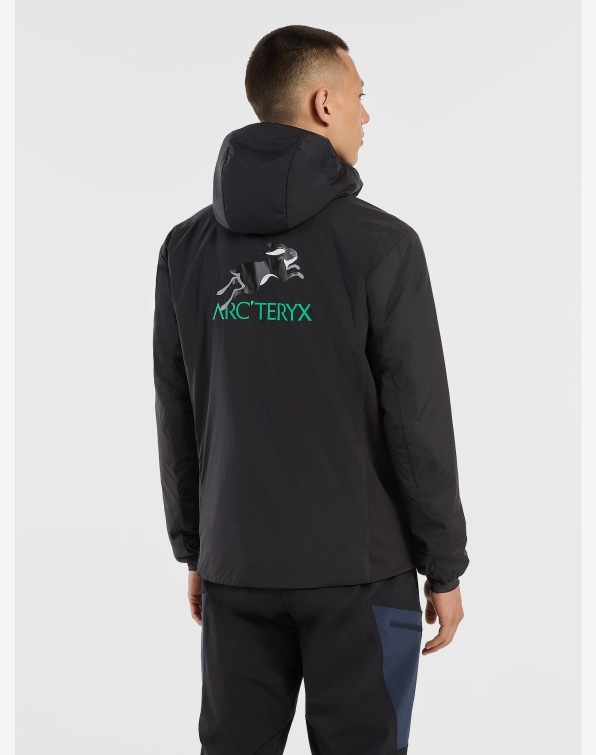
The currently trendy—and always pricy—adventure-gear brand Arc’teryx is ringing in the new year by replacing its signature logo (of a fossilized prehistoric bird) with a graphic of a leaping rabbit.
(14)
